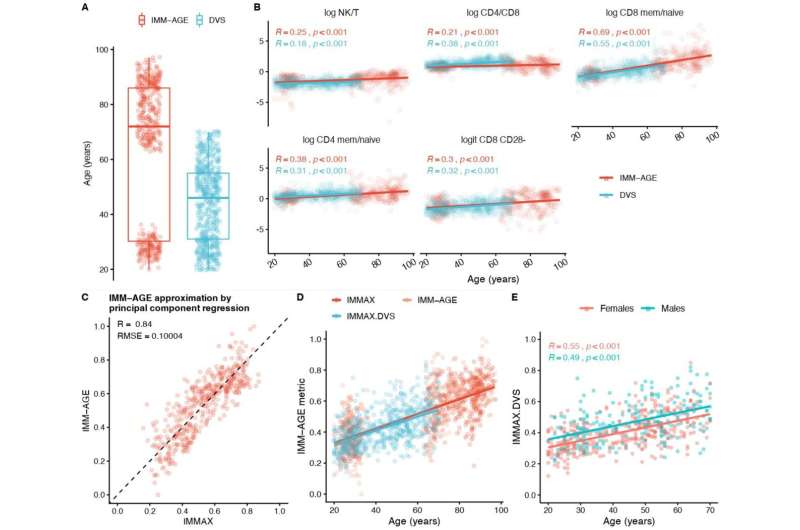A simplified measurement method for determining immune age improves analysis of cardiorespiratory fitness

Both the functionality of the immune system and cardiorespiratory fitness (CRF) play an important role in a person's health and work ability. Researchers at the Leibniz Research Centre for Working Environment and Human Factors in Dortmund (IfADo) have analyzed the influence of immune age on cardiorespiratory fitness in more detail. The immunology team has succeeded in developing a simplified procedure for determining an index of immune age and thus improving the determination of CRF.
Cardiorespiratory fitness is the ability of the respiratory system and blood circulation to supply the body with oxygen. As we age, cardiorespiratory fitness decreases, and with it the functionality of the immune system, which increases the risk of cardiovascular disease, for example. To assess the health risk or reduced work ability in an elderly working population, chronological age, meaning the age in years, was used for a long time.
A study at IfADo with almost 600 participants has now been able to show that biological age, meaning the age of the immune system, plays a much greater role in predicting cardiorespiratory fitness than chronological age. The researchers found that immune age, along with obesity and physical activity, has a significant impact on cardiorespiratory fitness. Chronological and biological age may also differ, which can explain the individual decline in immune system function in older people.
Measurement procedure simplified
Through this realization, preventive work can be done in the long run towards improved cardiorespiratory fitness and thus also towards work ability and health. Physical activity and exercise can help improve CRF and inhibit inflammatory responses, thereby strengthening and maintaining immune system function in an aging workforce.
Until now, many different markers in the blood have been used to determine immune age, which has made the procedure very time-consuming and costly. During the study, the researchers developed a simplified method for determining immune age that uses a smaller number of parameters. This means that the immune age can be determined more quickly and applied with less effort in medical prevention.
The research was published in Biology.
More information: Peter Bröde et al, Calibrating a Comprehensive Immune Age Metric to Analyze the Cross Sectional Age-Related Decline in Cardiorespiratory Fitness, Biology (2022). DOI: 10.3390/biology11111576


















